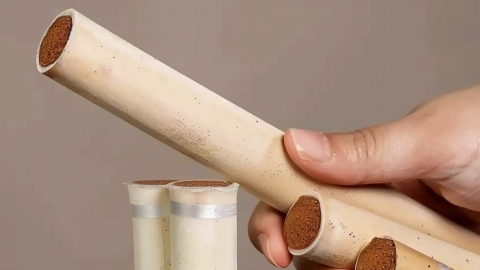Which areas should be treated with moxibustion for lumbar spine pain?
Generally, for lumbar pain, moxibustion can be applied to acupoints such as the Shenshu (Kidney俞), Dachangshu (Large Intestine俞), Yaoyangguan (Lumbar Yang Pass), Mingmen (Gate of Life), and Yaoshu (Lumbar Confluence). Detailed analysis is as follows:

1. Shenshu Acupoint
The Shenshu acupoint is located below the spinous process of the second lumbar vertebra, 1.5 cun lateral to the midline. As the back-shu point of the kidney, moxibustion on this point can warm and reinforce kidney yang, strengthen the waist and bones, and effectively alleviate symptoms such as cold pain and soreness in the lower back caused by kidney yang deficiency.
2. Dachangshu Acupoint
The Dachangshu acupoint is located below the spinous process of the fourth lumbar vertebra, 1.5 cun lateral to the midline. Being the back-shu point of the large intestine, it is closely related to the lumbar muscles and leg meridians. Moxibustion on this point can regulate qi, relieve counterflow, harmonize thestomach and intestines, and relax muscles and meridians. It is effective in treating symptoms such as low back pain and leg numbness caused by lumbar disc herniation and lumbar muscle strain.
3. Yaoyangguan Acupoint
The Yaoyangguan acupoint lies in the depression below the spinous process of the fourth lumbar vertebra. This acupoint belongs to the Du Meridian. Moxibustion at Yaoyangguan can dispel cold and dampness, and promote circulation of qi and blood in the meridians. It helps improve symptoms such as low back pain and restricted movement caused by obstruction of meridians due to cold and dampness.
4. Mingmen Acupoint
The Mingmen acupoint is located between the spinous processes of the second and third lumbar vertebrae. As one of the key acupoints in the human body, moxibustion on the Mingmen acupoint can strengthen the root of vitality, warm the kidney, and enhance yang energy. It is particularly effective in relieving symptoms such as soreness and cold intolerance in the waist and knees caused by kidney yang deficiency, especially cold-type pain in the lower back.
5. Yaoshu Acupoint
The Yaoshu acupoint is located in the sacral region, directly over the sacral hiatus on the posterior midline. Moxibustion at the Yaoshu acupoint warms the meridians, promotes circulation, dispels cold, and relieves pain. It helps alleviate low back pain and improve local blood circulation in the lumbar spine.
Moxibustion can be used as an adjunctive therapy but should not replace professional medical advice and treatment. Daily rest and avoiding strenuous exercise are important. If moxibustion is needed, it should be performed under the guidance of a qualified physician.









